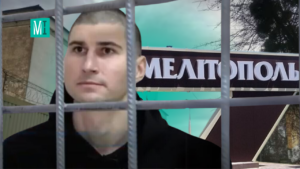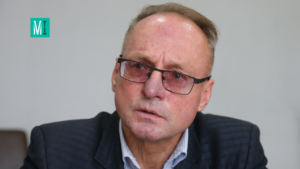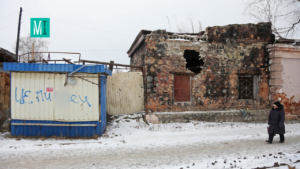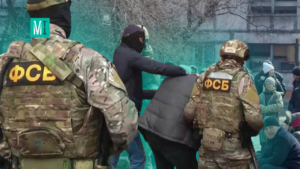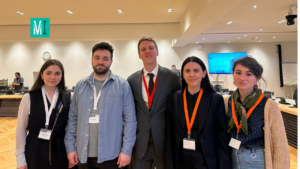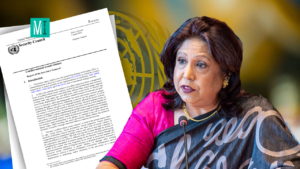Attack on a school, abduction, captivity. How residents of Mykhailo-Kotsiubynske in Chernihiv Region survived the occupation
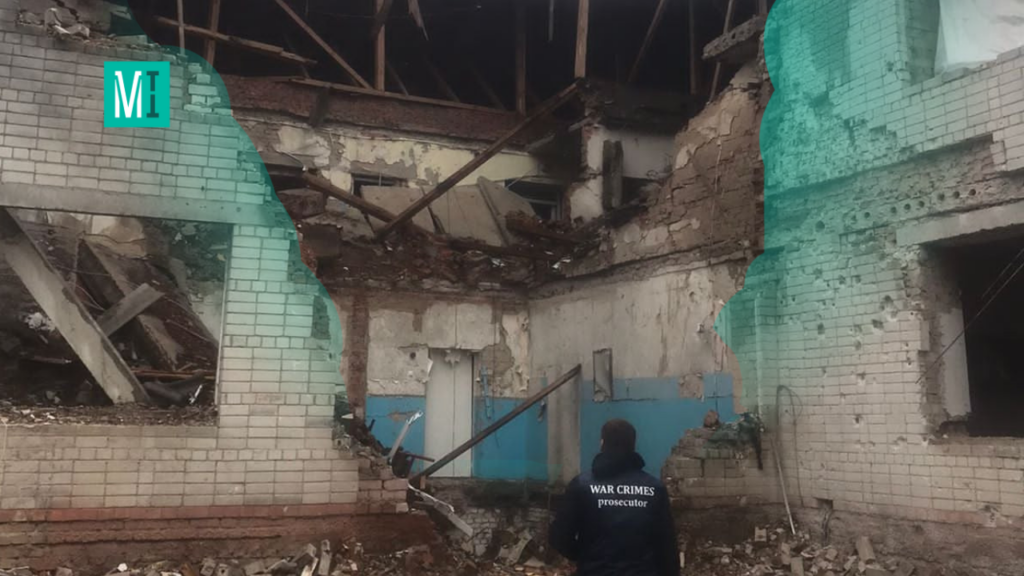
Mykhailo-Kotsiubynske is a residential community near Chernihiv, where about three thousand people lived before the full-scale invasion. It was directly in the path of the Russian army to Chernobyl. The village came under occupation on February 28 and was liberated on April 2. An MIHR fact finder recorded accounts of the ordeal.
The beginning
At 7 a.m. on February 24, 2022, the coffee cups in the Olkhovyk household kitchen were knocked over on the table by an explosion. The night before, Inna Olkhovyk had gone to bed late. Less than two hours later, her mother woke her up and told her not to worry, not to go to Chernihiv, and not to take her brother to kindergarten. In the room next door, her stepfather was talking on the phone with someone about the war. That same day, her mother’s sister arrived with a newborn baby. They all slept on the floor.
The occupation of the village began on February 28. The Olkhovyks descended into the cellar. Later they found out that there were shelters at the school, community center, and hospital. The school was closest to them. That day, about fifty people gathered there.

Mykhailo-Kotsiubynske. Photo from public sources
“The Russians set up checkpoints, walked the streets,” recalls Inna Olkhovyk. “Mom panicked and didn’t even consider returning home.”
Borys Buzinov, the foreman of a local collective farm, counted the vehicles passing by his house in a convoy that day. A total of 258 units. Among them were radars, checking if anyone was making any calls. The following morning, artillery and trucks entered the premises of a local agricultural enterprise – the vehicles were positioned to shell Chernihiv.
“We spoke with their commander,” recalls Buzinov, “They told us they would leave in 25 minutes. And they really left, towards the sand quarry in the direction of Chernihiv. Then they were defeated and ran to the veterinary clinic,” the man says about the soldiers who later abducted his nephew Mykyta.
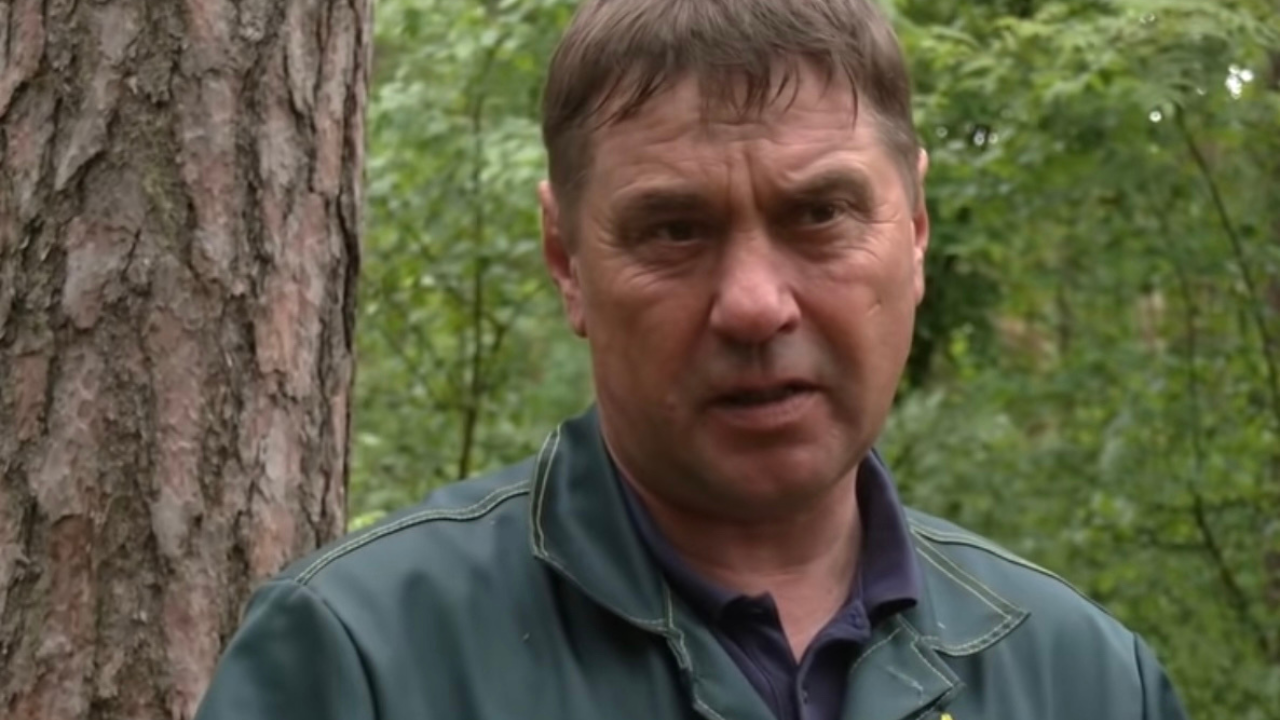
Borys Buzinov
The Russians interrogated the workers. The interrogators were the artillery commander and a blond soldier, whom Borys later recognized in a photo. They came to the farm daily for water, as the farm had a generator used for milking cows and pumping water. The Russians gave workers fuel for this. The agricultural enterprise was not occupied, but the stores were looted from the first day going forward, especially for alcohol and cigarettes. The group stationed behind the factory in the forest looted batteries, power tools, and some generators from the workshop.
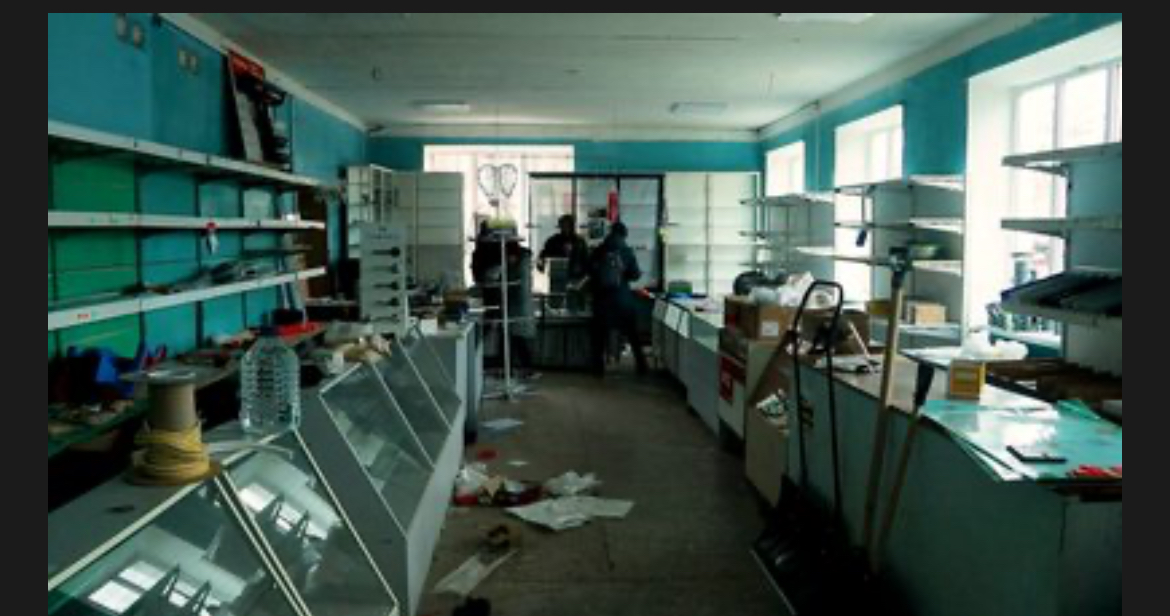
A store looted by Russian soldiers
Buryats and Russians were stationed in Mykhailo-Kotsiubynske. Borys recalls how in conversations they seemed “brainwashed”, talking about fascists, liberation, drug addicts in Chernihiv, and that the city was about to be captured. But there were also those who understood what they were doing.
Firefighter Kostiantyn Koval first saw tanks on February 28 as they entered the grounds of the fire station. There were rescue workers who did not have a dedicated shelter. They heard the Russians tearing down their flags outside, then saw them peering into the windows, calling them to come out. The Russian soldiers checked their phones, inspected everyone, and in the afternoon – a few hours later – drove on, taking the firefighters’ SIM cards.
Kostiantyn recalls that the following two days there were few military vehicles. He saw a large convoy on March 2:
“From March 2 to 3, many of them were around the fire station, and we couldn’t go out anywhere because we had no knowledge of what was going on and why.”
Most of the vehicles he saw were wheeled – Ural trucks, Kamaz trucks. There were few tracked BMP infantry fighting vehicles. He also counted six howitzers.
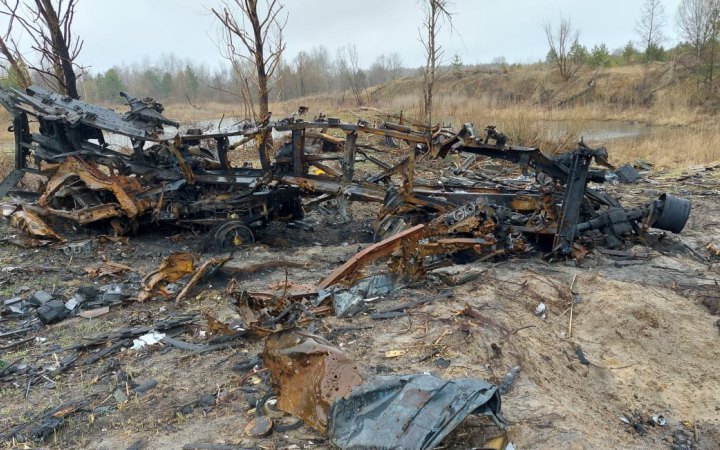
Burned Russian vehicles left after the de-occupation of Mykhailo-Kotsiubynske. Photo: Operational Command “North”
In the afternoon, the Russians requested assistance with their wounded. They needed to find a doctor or a hospital and requested a driver. When the firefighters said there were no medics in the village, they decided to go to Belarus, but eventually changed their minds. They bandaged five wounded soldiers on the spot and found a medic of their own – Kostiantyn says he was a warrant officer. He did not see the others wear any distinctive epaulets or chevrons – only patches with USSR symbols. The man assumes they were Belarusians – their uniform was lighter and they spoke with an accent. Among them was also a colonel – this is how another soldier addressed him. Kostiantyn assumes that there were many officers among those at the fire station.
The school
People started gathering at the school on February 27. Its principal, Mykola Shpak, along with colleagues, arranged chairs, tables, and laid out sports mats for about fifty fellow villagers in the shelter. The following day there were more people. Mykola counted about 130, including 30 children. Everyone came to spend the night, and about 60-70 remained during the day. Duties were divided among them – some were on guard, some managed the kitchen. The Russians did not come to check or search anyone.
Liudmyla Cherkas works at the school. She hid in the shelter there. On March 3, she was told that someone was watching the school:
“The principal and I locked everything up, so no one would go anywhere and everyone would stay in one place. The alarm kept flashing, so we covered it up so the lights wouldn’t be visible. We even locked the electrical panel, fearing the Russians might think it was a sniper. Then we saw someone walking with a flashlight around the school.”
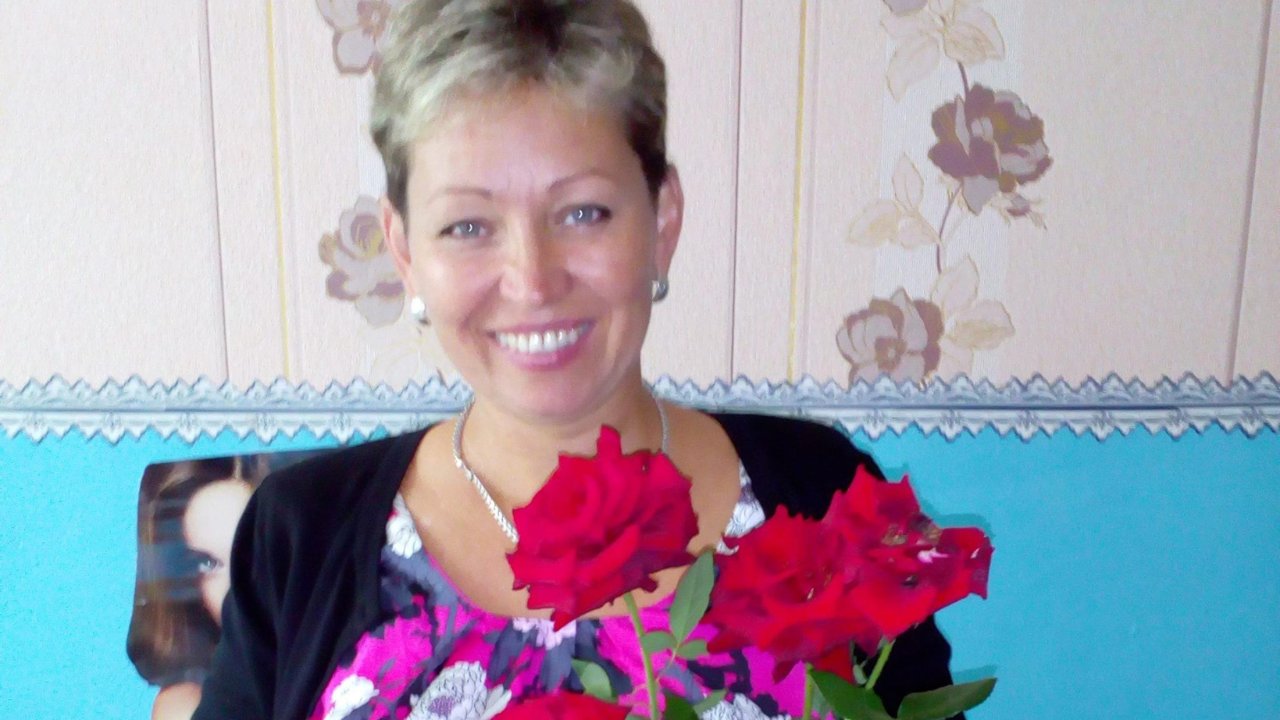
Liudmyla Cherkas
Those who were in the school usually ate in the cafeteria, but that day Liudmyla Cherkas’ daughter-in-law asked to eat in the shelter. On her way there, around 2:30 p.m., Liudmyla looked into the utility room where her colleague, Nadia Serdiuk, was sewing pillows for the shelter. Liudmyla recalls:
“I told her, ‘Let’s go to the basement.’ But she said, ‘Why are you dragging me there, it’s damp. We spend the night there, and that’s enough.’ But I went there automatically because my family was there.
Liudmyla’s son remained sitting in the lobby with a phone, and her husband went out for a smoke. Liudmyla was having lunch downstairs. They were resting with fellow villagers when they heard a blast – the ceiling plaster began to crumble. A few seconds later, there was another blast. The lights went out, dust rose. People ran into the corridor where the fire alarm was flashing. Liudmyla saw a man with a bloody hand and her son, white from dust, with a concussion. They confusedly recounted: one missile landed on the sports grounds, while another hit the school.
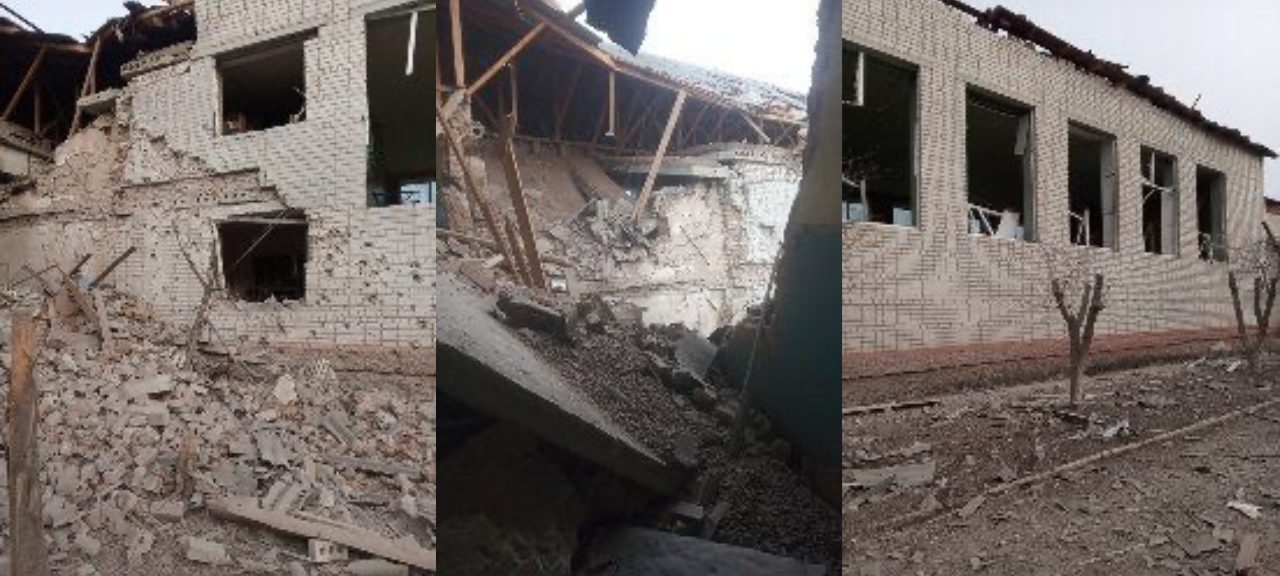
The school where people hid after the bombing
Liudmyla feared a possible third strike and urged everyone to leave, which was when she remembered Nadia – and rushed to find her. But her son said that Nadia was gone – nothing was left of the room where she worked.
School principal Mykola Shpak was at home – he didn’t stay at the school. Around 2:30 p.m., he heard two loud explosions. He received a call and learned about the attack.
“I ran there, our fire alarm was blaring,” he recounts, adding: “Everyone was running every which way, there were glass fragments and debris everywhere, dust. Panic, chaos.
People ran to neighbors’ cellars through the gardens. Shpak saw the destroyed roof, several school classrooms on the second and first floors, and the collapsed basement. Yet some people still stayed in the school overnight.
The following day, the principal drove to the school and saw Russian soldiers in camouflage with “USSR” patches.
“I, emotionally, without thinking about my safety, began asking them what they had done?!” Shpak recalls, adding: “And they said it wasn’t them, that our troops did that. My version is that they punished the village so as not to give away their coordinates.”
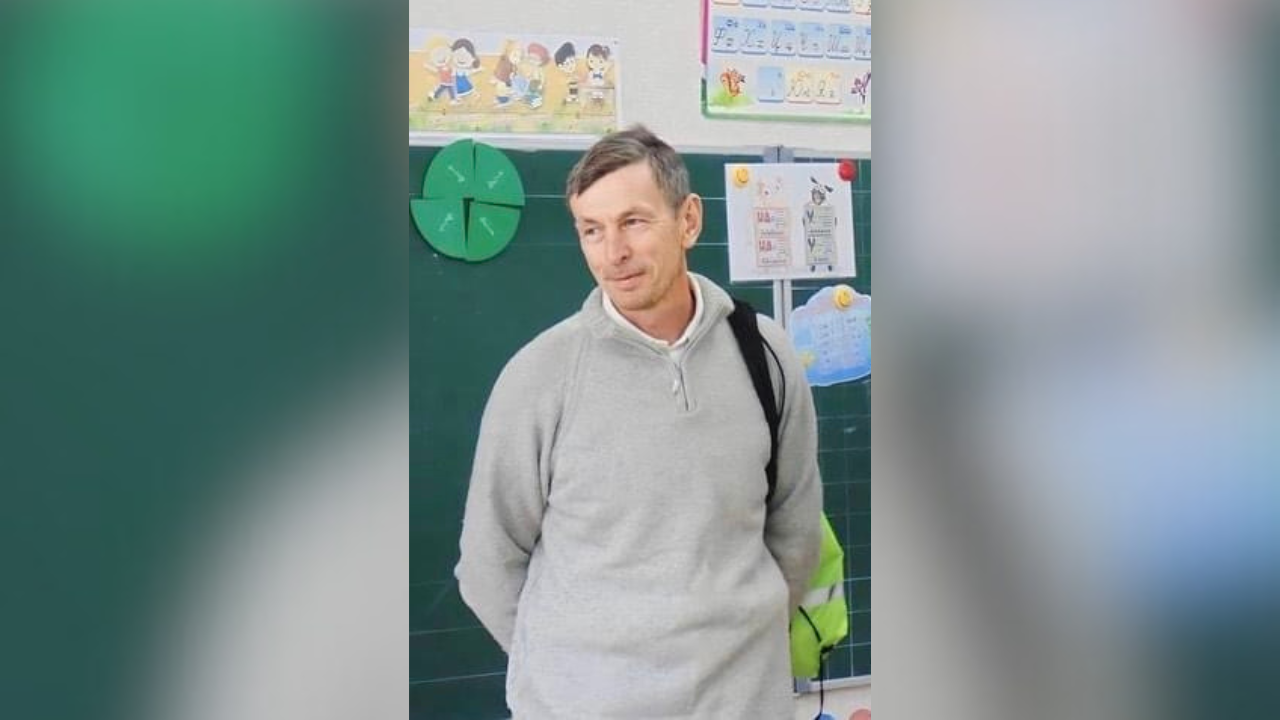
School principal Mykola Shpak
Borys Buzinov later said that he saw the trajectory of the shelling, as the Russians were checking his papers outside at that very instant. He thinks it was a Russian attack that the invaders tried to pass off as shelling by Ukrainians, implying that our own troops were firing at civilians.
Villagers with firefighters spent the entire day of March 5 digging out Nadia’s body – she was the only one killed in the attack. The Russians watched but didn’t help. They only supplied a rope. Nadia’s body was placed on a practice medical stretcher and buried in the cemetery.
When the cleanup was over, the Russians wanted to turn the school into a lookout point and set up a bakery. But the following day they left and didn’t return to the school. Villagers began salvaging the building. Mykola recounts:
“Very many locals came, trying to salvage what was left. They moved furniture to rooms that were intact, got plastic wrap from the feed mill, rails, nails from the store, to cover windows and the roof. Fortunately, it did not rain.
Liudmyla and her family first stayed at a friends’ place before returning home. They heard planes flying every day – at 6:30 p.m., 11:30 p.m., and 5:00 a.m. They saw missiles headed for Chernihiv. After the Russians came, searched, and took phones for inspection, they decided to leave through Andriyivka with a convoy. They were allowed to leave. They returned to the village in a month and a half.
The Olkhovyks left earlier. They spent six days at the school before the shelling and had time to settle in. Inna, her mother, stepfather, sister, two brothers, aunt with children were together. After the shelling, they stayed overnight in the school corridor, but could not sleep that night. The following day, they called a fellow villager and asked him to take them to Slavutych, where Inna’s biological father lives. They were taken there in an ambulance, explaining they were transporting a small child. Then the Russians occupied Slavutych too. The family returned to Mykhailo-Kotsiubynske on April 16.
Disappearance. Oleh and Andriy
Natalia Prokhorenko, wife of Oleh Prokhorenko, recalls that the military in black uniforms with presumably sniper weapons entered the village. She is a teacher at the local lyceum, and her husband worked as a security guard at the factory.
“It wasn’t his shift that day,” she recalls, “But the guy who was supposed to work couldn’t do it, and Oleh told me he couldn’t let down his partner and friend.”
Her husband disappeared on March 4, while at work.
“I kept calling and calling. There was no connection,” the wife recounts. “Then I got through to his partner, Oleksandr. He asked if Oleh was home. He said the Russians had come.”
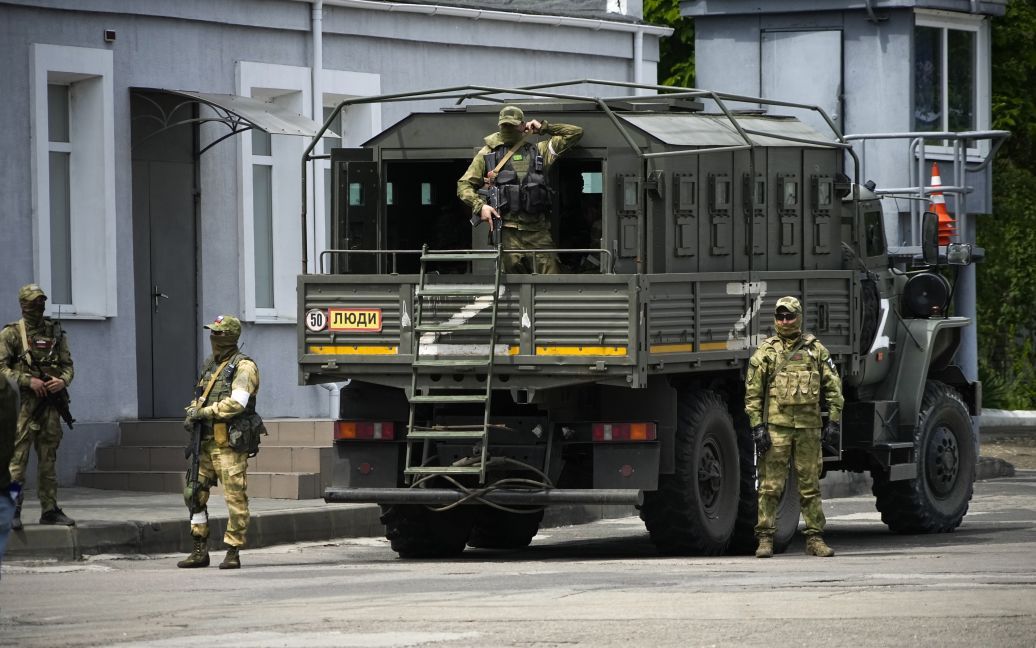
Russian soldiers during the invasion of Ukraine. Illustrative photo from public sources
It turned out that after the shelling of Russian positions, Russian soldiers entered the factory, found Oleh and Oleksandr in the basement, forced them to undress to the waist, threatened them with a gun, and took their phones for inspection. They found nothing on Oleksandr and released him, but saw a video on Oleh’s phone. Then a commander of non-Slavic appearance ordered his capture.
“Everyone hoped he would return, but he didn’t,” says Natalia. “For the first few days, we didn’t turn anywhere, thinking he would return, that he was just taken somewhere and would come home by himself.”
She went to fellow villager Yevhen Batalov, who was in contact with the Russians for humanitarian needs, asking if he knew anything. He said the soldiers who took Oleh had left the village, and the new ones knew nothing.
On April 7, after the de-occupation, Natalia was with Oleksandr when someone called him, and he urgently left. It turned out he was needed for identification of a corpse. The following morning Natalia did the same. Her husband’s body was found near Russian trenches by the factory.
“Next to him lay his backpack, his belongings. I didn’t even realize at once that he had been shot,” the woman says.
The forensic examination determined that Oleh died from a gunshot wound to the head. He had a fractured skull. Natalia didn’t see the body completely – only blue-black fingers. The date of death was listed as the end of the occupation, the death certificate just said: “March”.
It turned out that Oleh indeed transmitted the coordinates of the Russians to the defense forces. On the very first day, he called 102 and told them where their positions were, and they were shelled. Oleh recorded a video of the shelling and commented off-camera that it was him who tipped off the Ukrainian troops. On the day Oleh was taken, he called his grandfather and transmitted the coordinates, but that time they missed. After that, the Russians came for him at the factory.

Burned Russian vehicles left after the de-occupation of Mykhailo-Kotsiubynske. Photo: Operational Command “North”
Firefighter Kostiantyn Koval remembers that on March 3, Russians came to the fire station and said that there was a spotter at the factory. When on March 4, after the shelling, he went to extinguish a fire near the bus station, he saw a man with a bag over his head by the gate to the fire station. He believes it was Oleh Prokhorenko. Next to him lay another young men, who was being kicked – he looked like Mykyta Buzinov, who had been abducted. When the firefighters returned after putting out the fire, the prisoners were gone.
Marina Harmash talks about the disappearance of Andriy Zubko. On February 28, around 2 p.m., he went to the greenhouses. He usually returned home before dark, but not that time. Marina started calling him, but could not get any answer. Her brother checked the greenhouses, but there was no sign of Andriy.
On March 2, friends found Zubko’s motorcycle in the forest using geolocation data: it was parked, without a key, without the owner.
“Nobody touched anything, thinking he would return and drive home. Maybe he was hiding. Days and weeks passed,” says Marina.
Her acquaintances asked the Russians if they had seen Andriy. The first ones said they saw him riding a motorcycle into the forest but didn’t touch him. The second ones said that they saw the motorcycle. The third ones, who entered the village, were already seen by locals riding that motorcycle.
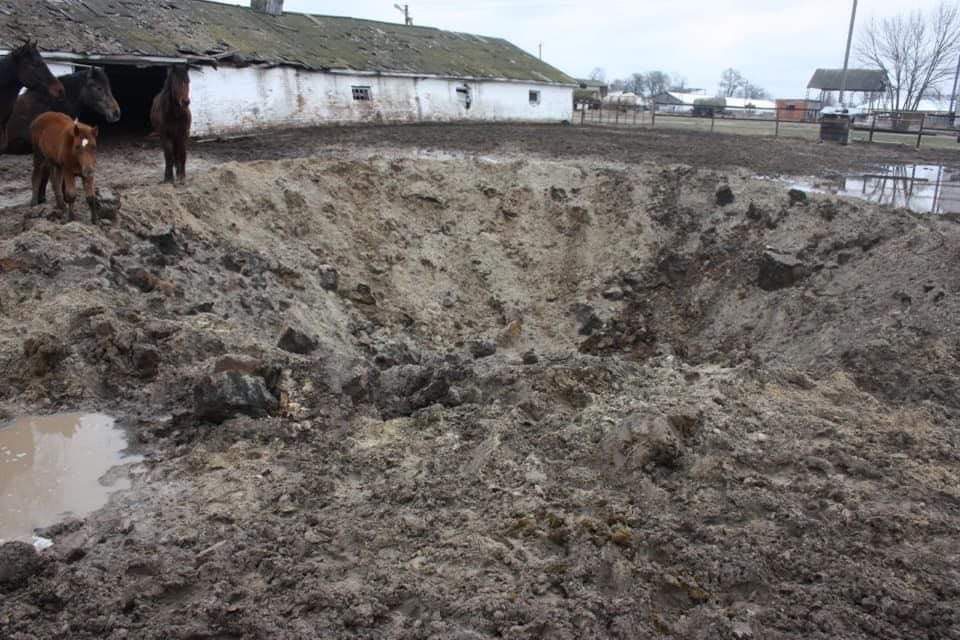
The aftermath of one of the air strikes on Mykhailo-Kotsiubynske
On April 2, the forest was checked again – the motorcycle was now in a pit about a hundred meters from its previous location, broken. They asked if Andriy had been seen in neighboring villages, but he wasn’t there. Through acquaintances, they started writing to Russian prisons: a response came that the letter passed censorship in Bryansk, at SIZO-1 pretrial detention center.
Marina learned that Andriy’s SIM card became active around March 27 or 28 and was active until August. The account was topped up three times, there were outgoing calls of 14 seconds to one number, and no incoming calls. The police said nothing about this. From Andriy Zubko’s Facebook page, Marina received a smiley emoji, and a few days later she got a call from a Russian or Belarusian number. She showed this to the police, but they said social media meant nothing.
“In response to the smiley, I wrote messages, but they were never delivered.”
Recently, law enforcement identified Andriy Zubko’s body through DNA samples. The deceased has not yet been returned to the family; the investigation is ongoing. It aims to establish the cause of death.
Captivity. Mykyta
Kateryna Ohiyevska, along with her boyfriend Mykyta Buzinov, came to Mykhailo-Kotsiubynske from Chernihiv, fleeing the shelling. He worked as a driver and a taxi driver. They settled with family on the edge of the village, so they didn’t immediately learn that the Russians had already entered the village.
Despite the fact that there were many enemy soldiers in the village and planes were constantly attacking Chernihiv, it really became dangerous when the invaders began checking documents and phones, searching houses.
“We hoped we would be overlooked, but unfortunately, on March 4, they were moving vehicles and checking if there were any suspicious people in nearby houses,” Kateryna Ohiyevska recalls. “They couldn’t comprehend why the Armed Forces were destroying their convoys around the village so quickly, so they saw an enemy in every man.”
The Russians asked Kateryna and Mykyta to come out to the street from the front yard. They had no chevrons or license plates on their vehicles, did not use any call signs. All looked alike. They calmly checked documents, looked through phones. They asked if the couple were interested in the situation in Chernihiv and why they had come to the village from the city. Kateryna and Mykyta explained that they had left due to danger, and they were not interested in what was happening in the city, even though they found photos of the shelled city on their phones. Shelling began during the interrogation, and they ran for cover in the shelter together with the invaders.
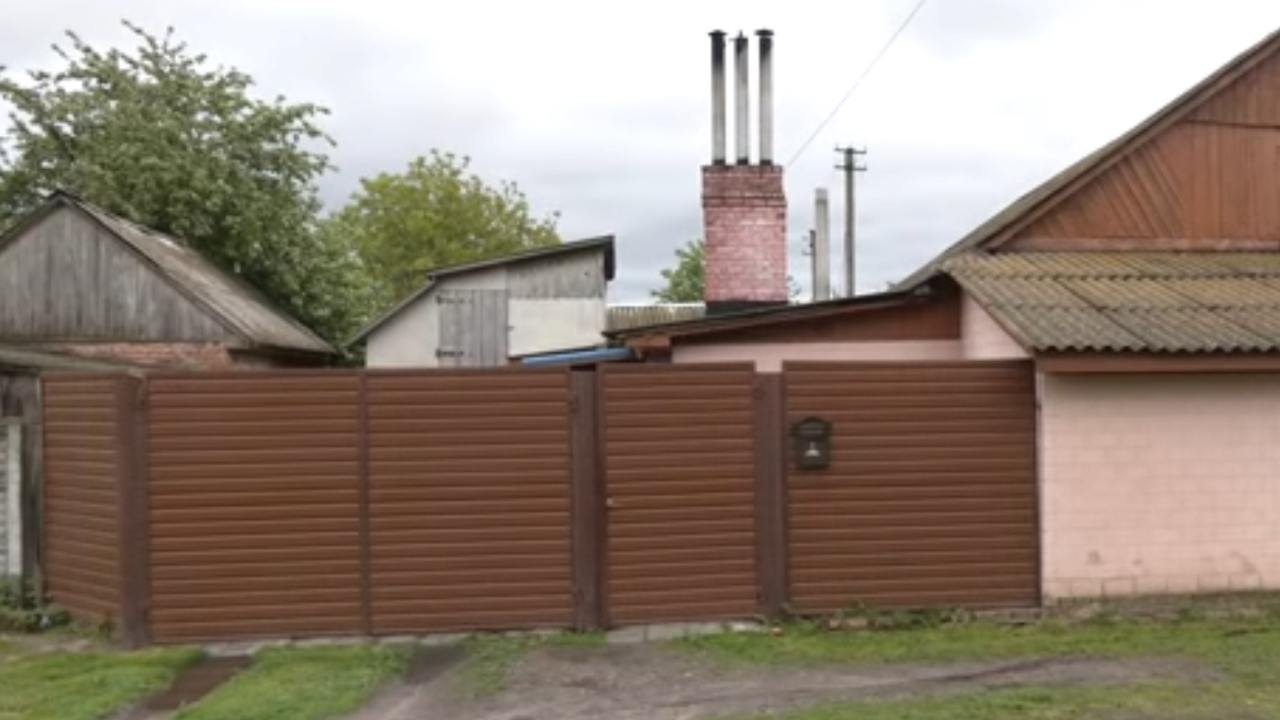
The front yard of the Buzinov family
“The scariest part was sitting with them for about 40 minutes. About ten of them crowded into a small room,” Kateryna recalls.
About 20 minutes later, a military man of non-Slavic appearance descended into the shelter, introduced himself as the head of security, and again took their phones. He took Mykyta’s mother, Mykyta himself, and his brother “for a talk.” Kateryna and Mykyta’s uncle remained in the shelter. Half an hour later, another Russian soldier came down for her, pointing a gun at the young woman.
When she was being led away, she heard Mykyta’s mother screaming in the closed building, trying to understand where her son was and what was happening. Something suspicious in Mykyta’s phone led to him being put on his knees, interrogated, and checked for nationalist tattoos or traces of weapons.
“As I understand, Mykyta wanted to protect us and directed their attention to himself by saying he had a friend in the ‘uniformed services’. That’s how it started,” Kateryna says.
The head of security began interrogating her. The young woman realized he knew a lot about them, checked social networks, so she didn’t make anything up, but didn’t answer directly either – she said she wasn’t interested in anything, only in saving herself and her loved ones.
When she was taken away, they started shouting at Mykyta, saying it was because of him that the Russian convoy got targeted. The head of security threatened to shoot Mykyta in front of Kateryna. After this, she was taken to the house, on the way the soldier assured her that there was nothing to worry about, it was a psychological game to scare Mykyta so he would tell what they wanted to hear.
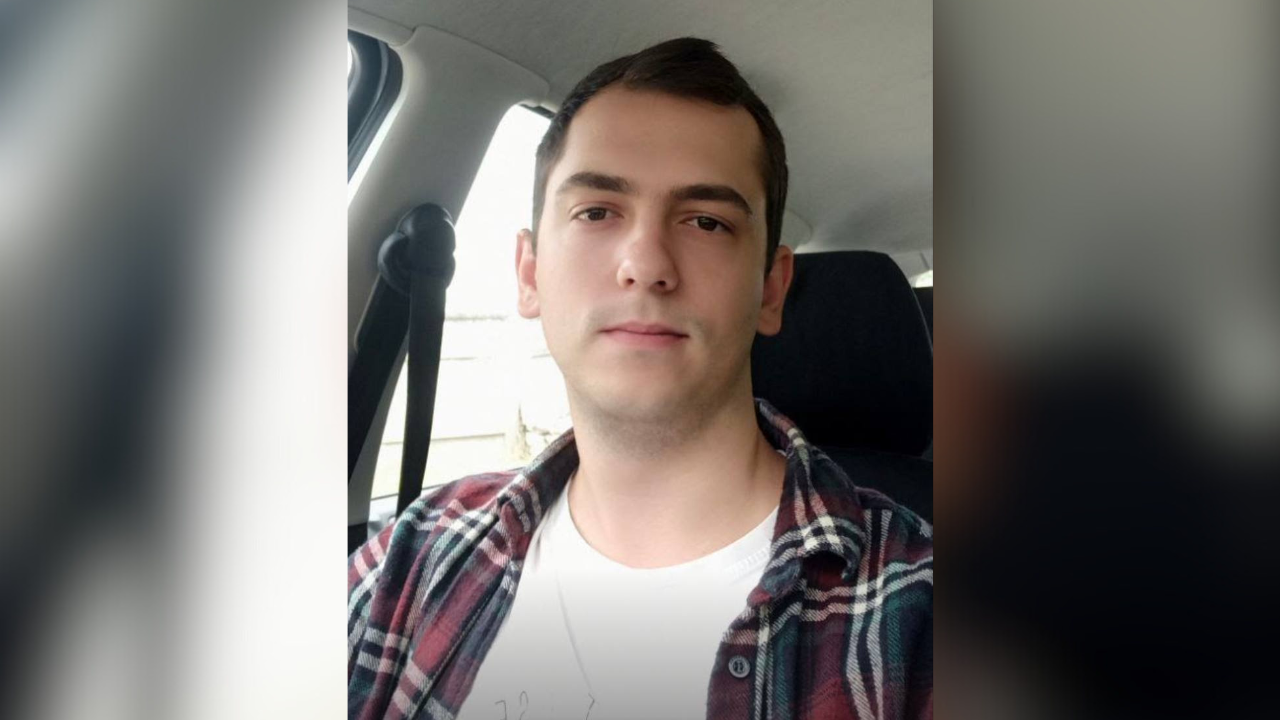
Mykyta Buzinov
By that time, the Russian soldiers had left the house – only the uncle was inside. About 10 minutes later, another Russian soldier took him and Kateryna, but Mykyta was no longer there. He began to say that Mykyta was a “traitor to the state” and that he would face 15 years in prison in Ukraine. He said he wouldn’t return the phones and it was better not to leave the house, “or else”.
When we asked where Mykyta was, they said it was none of our business,” recalls Kateryna. “He said, ‘Wait, maybe he will return.’ I stood silently, although I was in shock, barely conscious.”
The head of security again took her for a one-on-one talk. He returned the phones (hers and her uncle’s) and ordered not to show them to anyone. He added that this was standard procedure, and Mykyta would return.
The family spent the following day in the house. They knew that fellow villagers had already been released after their interrogations, but Mykyta was still missing. They began looking for him in empty buildings, to no avail. They thought the Russians had taken him to their positions or taken him away – mother went to the center of the village to Russian commanders to find out, but they said nothing. Borys Buzinov, who works at the local agricultural enterprise, kept asking the Russians who came for water if they had seen Mykyta. No one knew anything. The day before the retreat, the “chief of the village” told Borys that he would help find the boy, but the Russian troops withdrew.
After the de-occupation, Mykyta was also not found. No DNA matches were discovered in almost a year. This gave the family confidence that he is in captivity.
“Nine months into our search, we were advised to write a letter through the FSIN (Federal Penitentiary Service – MIHR), the Russian system of colonies and pre-trial detention centers. If the letter goes through, there’s a high chance that Mykyta is there,” says Kateryna. “That’s how we found out that he is in Belgorod.”
A Russian lawyer who helps Ukrainian captives agreed to go and check if Mykyta was there. The pre-trial detention center stated they didn’t have him. However, Mykyta’s uncle, who lives in Russia, wrote to Zonatelecom and received a response that his nephew had been released, meaning he had been there but had been since taken somewhere else. Kateryna says he was either transferred, or they said so in order to stop the family from looking there.
“People are returning from captivity, and in the search groups, relatives began to find out where the civilian captives are after 8-9 months of uncertainty,” says Kateryna. “So I really hope that he was seen because he is not among the dead. Just where is he and in what condition? From the first days, I didn’t think that the worst had happened to him, I always said and say that he is alive – it’s just a matter of time before we find him.”
Now Mykyta’s relatives and Kateryna support each other. Even during the occupation, Kateryna began searching for her boyfriend, wrote petitions about forced deportation and disappearance. After the de-occupation, she gave testimony to the Office of the Attorney General and other law enforcement agencies. Now, as a part of the NGO Civilians in Captivity, she is works with other human rights organizations, including MIHR. She maintains contacts with the ombudsman and the Search for the Missing project.
“Just six months ago, they only talked about prisoners of war, but mostly kept silent about civilians. They told us: we are searching, wait, don’t worry. Then we realized that we can’t wait forever, something needs to be done – and now there is a lot of publicity. I hope that there will be a shift and they will begin bringing back civilians officially.”
Oksana Rusalova, MIHR journalist


